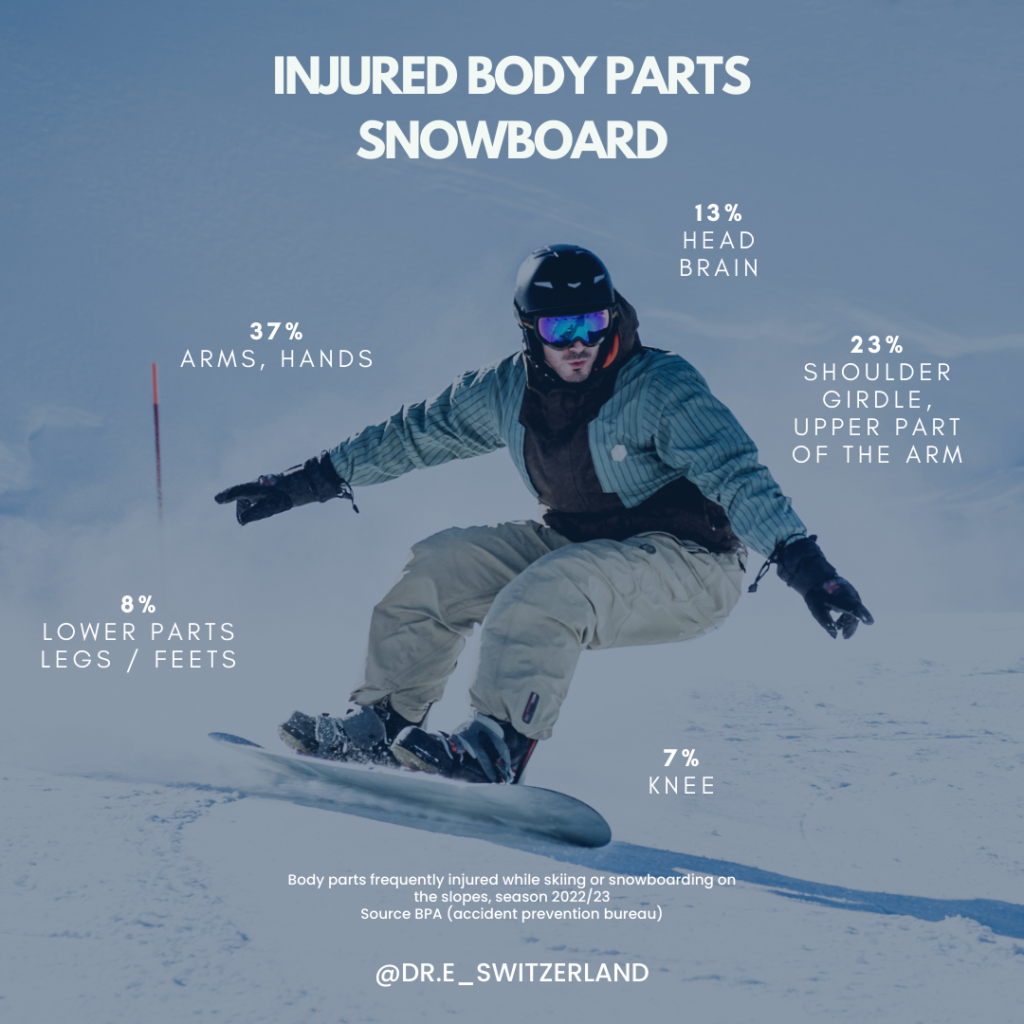- More than a quarter of the Swiss population frequents the slopes in winter.
- According to the BPA (Bureau de Prévention des Accidents), around 64,000 people are injured every winter while skiing or snowboarding on Swiss slopes.
- Around 90% of accidents are caused by the people involved.
- In addition to specific protective equipment such as ski helmets and the right speed, good physical condition is important to enjoy the winter season in complete safety.
Skiing, synonym with escape and adrenalin, requires adequate physical preparation to maximize pleasure while minimizing the risk of injury. Optimal physical condition not only enhances performance on skis, but also strengthens resistance to the sometimes extreme conditions of snow-covered mountains.
The ski slopes, while captivating, can also be the scene of potential dangers. Steep slopes, steep turns and changing weather conditions can make skiing a risky business. That’s why it’s essential to take precautions and adopt a proactive approach to avoid accidents and injuries.
Good physical preparation involves strengthening the key muscles used in skiing, such as the leg, trunk and back muscles. Warming up before hitting the slopes is also crucial to prepare the body for specific skiing movements and reduce the risk of muscular injury.
To avoid injuries, it’s essential to follow safety rules on the slopes, wear appropriate equipment and know your own limits. Being cautious and following safety instructions helps ensuring an enjoyable and incident-free skiing experience.

The benefits of a good physical preparation are numerous and allow to:
Reduce the risk of serious injury
Sprains, fractures and other injuries can ruin your vacation. Proper preparation considerably reduces these risks
Increased muscular strength protects joints in the event of a fall, reducing ligament stress and guaranteeing greater protection. Regular physical activity also improves bone mineral density, considerably reducing the risk of fractures in the event of an accident.
Finally, improved flexibility gives muscles greater elasticity and stretching capacity, strengthening their ability to withstand greater mechanical loads and simultaneously delivering better performance, while preventing muscular injuries.
Whether you have a gym membership or prefer to work out at home, there are options to suit everyone. At a gym, targeted exercises incorporating several muscle groups can be included in your routine. For those who prefer to train at home, our exercise guide offers a series of exercises specifically designed to strengthen the muscles essential for skiing and work on balance. You can order it by sending us a short message via the contact form.
Muscle tests can also be carried to accurately assess your level of strength in the main muscle groups involved in skiing. These tests will enable you to tailor your training program to your specific needs, ensuring optimal physical preparation for confidently hitting the slopes.
Reduce the intensity of physical pain
Aches and pains are inevitable, but the right preparation can make them more bearable and less frequent.
When we ski, our muscles are subjected to considerable stress, which can lead to painful muscle soreness. This is mainly the result of micro-tears in the muscle fibers, caused by intense, repeated effort.
Muscle strengthening plays a crucial role in preventing muscle soreness. By strengthening the muscle groups used during skiing, we improve their endurance and shock-absorbing capacity, thereby reducing the risk of micro-injuries. Targeted strengthening also helps to stabilize joints, minimizing unnecessary stress on muscles.
Increase ski confidence
To increase confidence on skis, it’s essential to focus on solid physical preparation that encompasses not only technical skills, but also balance and strength.
Balance is crucial for maintaining a stable position, reacting effectively to changes in terrain and anticipating movement. Specific exercises to improve stability, combined with regular practice on a variety of terrain, will help to build intrinsic confidence.
Increased confidence not only makes for a more enjoyable skiing experience, it also offers the opportunity to explore new challenges and continually progress, creating a more rewarding experience on the slopes.
Restore sensation earlier in the event of injury
Early restoration of sensation after injury is a crucial aspect of the recovery process. When an injury occurs, recovery time can be significant, but prior preparation can help speed up the process.
In the event of injury, a rapid response with appropriate medical care and first aid can reduce the negative consequences. Rehabilitation, supervised by medical professionals, plays an essential role in gradually strengthening weakened muscles and restoring joint mobility.
Combined with a holistic approach including a balanced diet, adequate rest and stress management, this comprehensive approach promotes faster recovery, enabling sensory abilities to be regained sooner.

Conclusion
In conclusion, physical preparation plays a vital role in skiing by minimizing the risk of injury, considerably reducing the risk of muscle soreness and thus improving your enjoyment on the slopes.
By adopting a responsible approach, preparing properly and remaining aware of the surrounding conditions, ski enthusiasts can make the most of their winter experience while preserving their health and safety.
